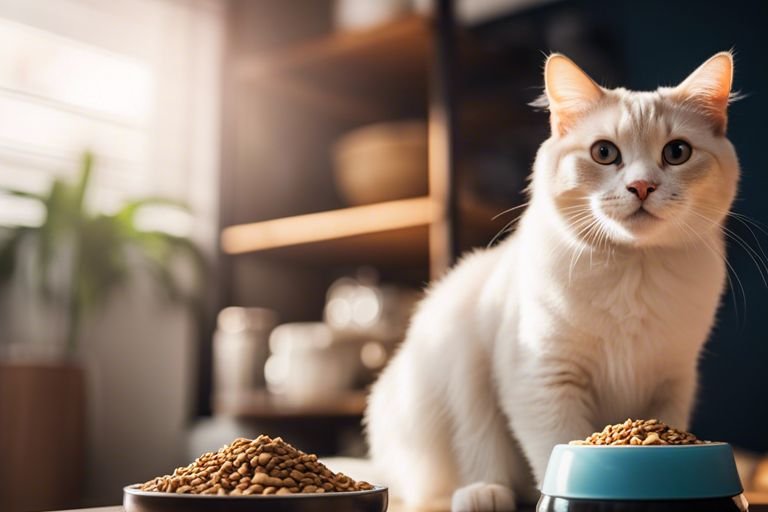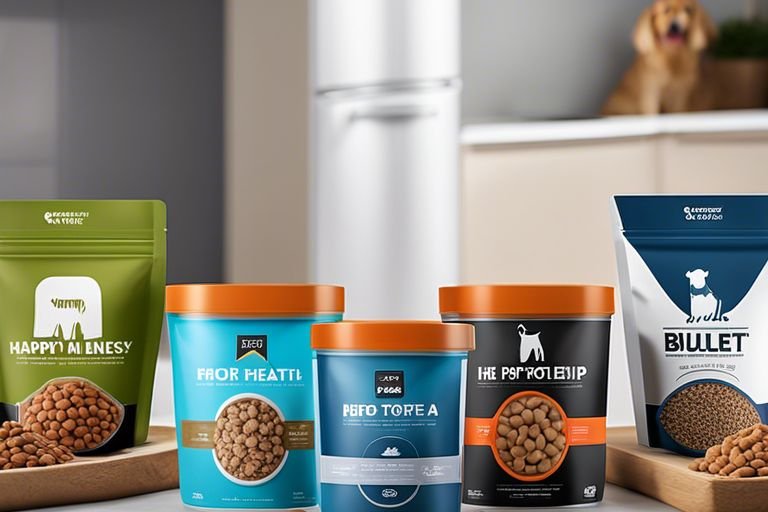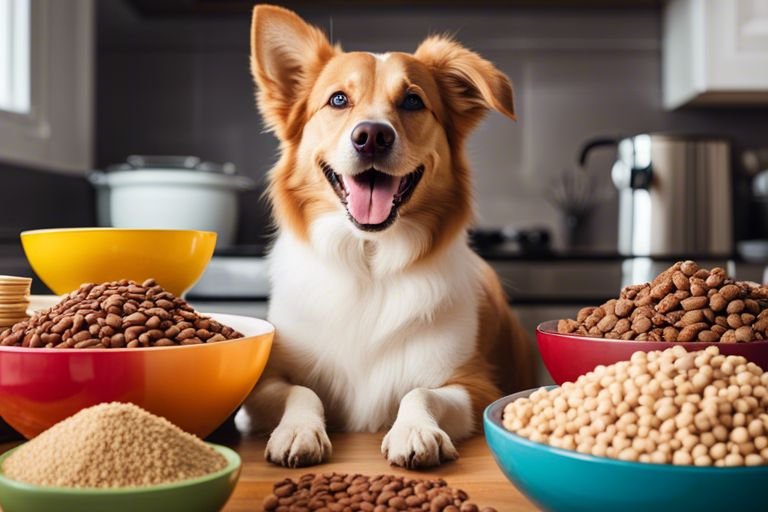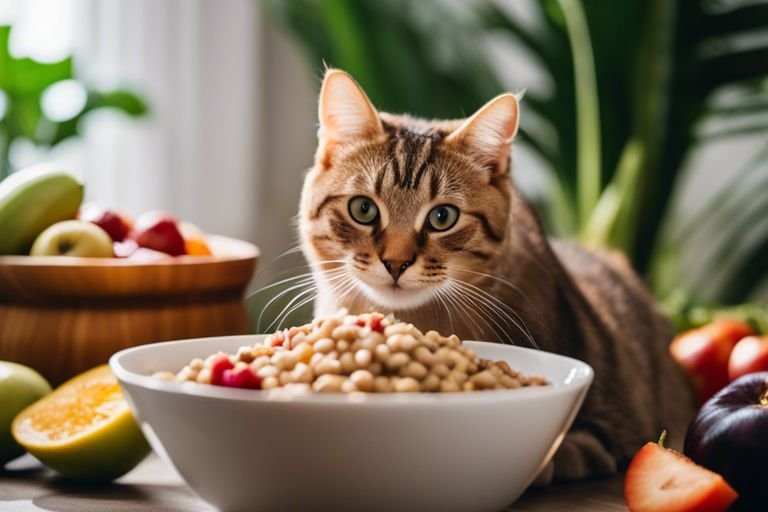What Makes Low-Glycemic Cat Food A Unique Choice?

It’s fascinating to understand why low-glycemic cat food is gaining popularity among pet owners. This informative article will explore into the reasons behind why opting for low-glycemic options may be a beneficial choice for your feline friend’s health and wellbeing. Let’s uncover the unique advantages and features that make this type of cat food a standout option in the market.
Key Takeaways:
- Low-glycemic cat food prioritizes stable blood sugar levels: This unique choice helps in preventing spikes and crashes in blood glucose, providing steady energy throughout the day for your feline friend.
- Supports weight management: By choosing low-glycemic options, you can help your cat maintain a healthy weight as these foods are often less likely to contribute to obesity.
- May reduce the risk of diabetes: Low-glycemic cat food can be a preventative measure against diabetes by regulating blood sugar levels and reducing stress on the pancreas.
- Improved dental health: These foods can contribute to better dental health in cats, as they are less likely to contain high levels of carbohydrates that can lead to plaque and tartar buildup.
- Overall well-being and vitality: Opting for low-glycemic cat food can lead to increased energy levels, shiny coat, and enhanced overall health and vitality in your furry companion.

The Basics of Glycemic Index
What is Glycemic Index?
Basics of Glycemic Index involve understanding how different carbohydrates in food affect blood sugar levels. The Glycemic Index (GI) is a scale from 0 to 100 that ranks carbohydrates based on how quickly they raise blood glucose levels after consumption. Carbohydrates with a low GI are digested and absorbed slowly, causing a gradual rise in blood sugar levels, while those with a high GI are digested rapidly and cause a quick spike in blood sugar.
How Does it Affect Cats?
What makes the Glycemic Index crucial for cats is its impact on their overall health. High-GI cat food can lead to fluctuations in blood sugar levels, potentially contributing to obesity, diabetes, and other health issues in felines. Cats are obligate carnivores with a biological need for a diet rich in protein and low in carbohydrates. By feeding them low-GI cat food, you can provide a nutritionally balanced diet that mimics their natural dietary requirements, promoting better weight management and overall well-being.
Glycemic index awareness is especially important for cats prone to diabetes or obesity. By lowering the intake of high-GI foods and opting for low-GI alternatives, cat owners can support their feline companions’ health goals and contribute to their longevity and quality of life.
The Importance of Blood Sugar Control in Cats
Assuming the role of a responsible pet owner involves understanding the significance of maintaining proper blood sugar levels in cats. Just like in humans, elevated blood sugar levels in felines can lead to various health issues. From diabetes to obesity, high blood sugar poses risks that can impact the overall well-being of our furry companions.
The Risks of High Blood Sugar
Importance lies in recognizing the dangers associated with high blood sugar levels in cats. When glucose levels in the bloodstream soar, it can result in diabetes mellitus, a condition that requires careful management and can have long-term health consequences. Cats with untreated diabetes may experience symptoms such as increased thirst, excessive urination, weight loss, and lethargy. Moreover, unregulated blood sugar can also lead to complications like nerve damage, cataracts, and even potentially life-threatening conditions.
The Benefits of Low Blood Sugar
Sugar control is crucial for mitigating the risks cats face with high blood sugar levels. By feeding your feline companion low-glycemic cat food, you can help maintain stable blood sugar levels, reducing the likelihood of developing diabetes and other related conditions. Low-glycemic cat food contains complex carbohydrates that are digested more slowly, leading to a gradual release of glucose into the bloodstream. This sustained release helps prevent spikes in blood sugar, promoting overall health and well-being in cats.
To support optimal blood sugar control in your cat, choosing a diet rich in high-quality proteins and complex carbohydrates is vital. Additionally, regular veterinary check-ups, monitoring your cat’s weight, and incorporating interactive play to encourage exercise can all contribute to keeping blood sugar levels in check and ensuring a happy, healthy feline companion.

How Low-Glycemic Cat Food Works
Many pet owners are increasingly turning to low-glycemic cat food as a way to promote their feline friends’ health and well-being. According to Low Carb Diets For Cats | Pet Talk | VMBS News, low-glycemic cat food works by focusing on ingredients that have a minimal impact on blood sugar levels. By incorporating these ingredients into their diet, cats can maintain more stable energy levels and reduce the risk of developing conditions like diabetes.
The Science Behind Low-Glycemic Ingredients
Works by understanding how different ingredients affect cats’ blood sugar levels. Low-glycemic cat food includes ingredients like meat, fish, and vegetables that are digested more slowly, leading to a gradual release of glucose into the bloodstream. This helps prevent spikes in blood sugar levels and promotes a more balanced energy supply throughout the day.
The Role of Fiber and Protein
The inclusion of fiber and protein in low-glycemic cat food plays a crucial role in maintaining a cat’s health. Fiber helps regulate blood sugar levels and promotes gastrointestinal health, while protein is vital for muscle development and overall well-being. By prioritizing these nutrients in their diet, cats can enjoy a balanced and nutritious meal that supports their overall health and vitality.
For instance, fiber-rich ingredients like sweet potatoes and peas can help cats feel fuller for longer periods, reducing the urge to overeat and potentially aiding in weight management. Additionally, high-quality proteins from sources like chicken and fish provide vital amino acids that are vital for cats’ growth and maintenance of lean muscle mass.

The Unique Benefits of Low-Glycemic Cat Food
All pet parents want the best for their furry friends, and choosing low-glycemic cat food can offer a range of unique benefits. Let’s probe into some of the key advantages that low-glycemic cat food provides for your feline companion.
Weight Management
Weight management is crucial for the overall health and well-being of cats. Low-glycemic cat food helps regulate blood sugar levels, which can contribute to weight control. By providing a balanced diet that reduces spikes in blood sugar, low-glycemic cat food can help prevent obesity and maintain a healthy weight for your cat.
Improved Digestion
On top of aiding in weight management, low-glycemic cat food also supports improved digestion. Foods with a lower glycemic index are typically easier for cats to digest, reducing the risk of gastrointestinal issues. By promoting better digestive health, low-glycemic cat food can help prevent common problems such as constipation or diarrhea, ensuring your cat’s digestive system stays in optimal condition.
A well-balanced diet plays a significant role in your cat’s overall health. By choosing low-glycemic cat food, you’re providing your feline companion with the important nutrients they need for improved digestion and better overall well-being.
Reduced Risk of Chronic Diseases
An important benefit of low-glycemic cat food is the reduced risk of chronic diseases such as diabetes and certain types of cancer. High-glycemic diets can lead to insulin resistance and inflammation, increasing the likelihood of developing these serious health conditions. By opting for low-glycemic cat food, you can help lower the risk of these chronic diseases and promote a healthier, longer life for your cat.
It’s important to prioritize your cat’s nutrition to prevent the onset of chronic diseases. Low-glycemic cat food offers a proactive approach to managing your cat’s health, reducing the risk of serious illnesses and ensuring they can thrive for years to come.
Debunking Common Myths About Low-Glycemic Cat Food
Once again, let’s research into some common misconceptions surrounding low-glycemic cat food. It’s crucial to address these myths to provide a clearer understanding of why choosing low-glycemic options for your feline friend can be beneficial.
Is Low-Glycemic Cat Food Too Expensive?
For many pet owners, the misconception that low-glycemic cat food is prohibitively expensive can deter them from considering this option. However, the cost of low-glycemic cat food varies depending on the brand and specific ingredients. While some premium brands may have a higher price point, there are also more affordable options available. Investing in your cat’s health through high-quality nutrition can lead to long-term cost savings by potentially reducing the risk of certain health issues down the line.
Is Low-Glycemic Cat Food Only for Diabetic Cats?
About the myth that low-glycemic cat food is exclusively for diabetic cats, it’s crucial to clarify that this type of food is beneficial for all cats, not just those with diabetes. While low-glycemic options can be especially helpful for managing blood sugar levels in diabetic cats, they also offer valuable health benefits for non-diabetic cats. By providing a balanced diet that helps regulate blood sugar levels and reduces the risk of obesity, low-glycemic cat food supports overall feline health and well-being.
With that said, if your cat has specific health concerns such as diabetes, obesity, or other conditions that can be influenced by diet, consulting with your veterinarian about incorporating low-glycemic cat food into their feeding regimen is advisable.

Choosing the Right Low-Glycemic Cat Food
Key Ingredients to Look For
For optimal feline health, it’s crucial to select low-glycemic cat food with high-quality ingredients. Look for protein sources like real meat (chicken, turkey, or fish) as the primary ingredient. These proteins provide necessary amino acids for your cat’s overall well-being. Additionally, incorporating whole grains such as brown rice or oats can offer sustained energy and fiber for digestive health.
Avoiding Fillers and By-Products
The key to choosing the right low-glycemic cat food lies in avoiding fillers and by-products. The inclusion of fillers like corn, wheat, or soy can spike your cat’s blood sugar levels and lead to weight gain. By-products are low-quality ingredients that lack the necessary nutrients your cat needs for proper nutrition.
This careful selection ensures you’re providing your cat with a balanced diet that promotes stable blood sugar levels and supports their overall health and wellness.
Reading Labels and Nutrition Facts
This step is critical in choosing the right low-glycemic cat food. Check the ingredient list for any artificial additives, colors, or preservatives that could harm your cat’s health. Pay attention to the nutrition facts to ensure the food is balanced in proteins, fats, and carbohydrates. Opt for options with lower carbohydrate content to help manage your cat’s glycemic response.
Reading labels and understanding nutrition facts can empower you to make informed decisions about your cat’s diet, ultimately leading to a happier and healthier feline companion.
Final Words
So why should you consider choosing low-glycemic cat food for your feline friend? In a world where pet nutrition is becoming increasingly important, opting for low-glycemic cat food can provide unique benefits that go beyond traditional diets. By focusing on slower-release carbohydrates and balanced nutrition, this specialized food can help regulate blood sugar levels and promote a healthier weight for your cat.
Ultimately, what makes low-glycemic cat food a unique choice is its potential to improve your cat’s overall well-being and longevity. With the right combination of ingredients and a focus on quality nutrition, this type of food can offer a tailored solution for cats with specific dietary needs or health concerns. So, consider making the switch to low-glycemic cat food and see the positive impact it can have on your feline companion’s health and happiness.
FAQ
Q: What is low-glycemic cat food?
A: Low-glycemic cat food is specially formulated to contain ingredients that do not cause a rapid spike in your cat’s blood sugar levels.
Q: How is low-glycemic cat food beneficial for cats?
A: Low-glycemic cat food can help in maintaining stable energy levels, minimizing the risk of obesity, and managing conditions such as diabetes in cats.
Q: What makes low-glycemic cat food a unique choice?
A: Low-glycemic cat food is unique because it focuses on providing balanced nutrition without relying on high-carb ingredients that can lead to blood sugar fluctuations.
Q: What ingredients are typically found in low-glycemic cat food?
A: Low-glycemic cat food often includes high-quality proteins, healthy fats, and complex carbohydrates like lentils, chickpeas, and sweet potatoes.
Q: How can low-glycemic cat food benefit cats with health issues?
A: Cats with health issues like diabetes or obesity can benefit from low-glycemic cat food as it helps in managing their condition by regulating blood sugar levels and promoting a healthy weight.




